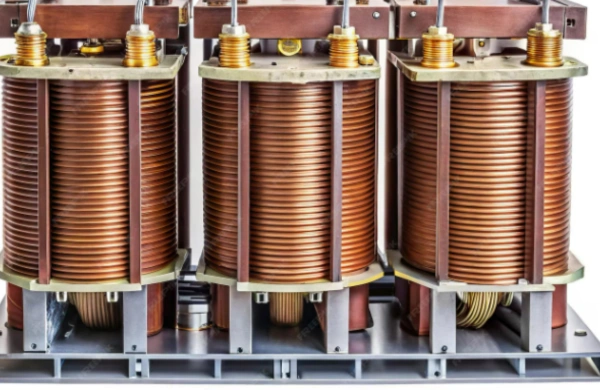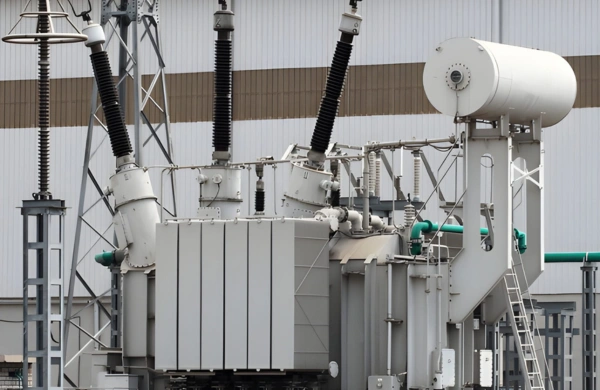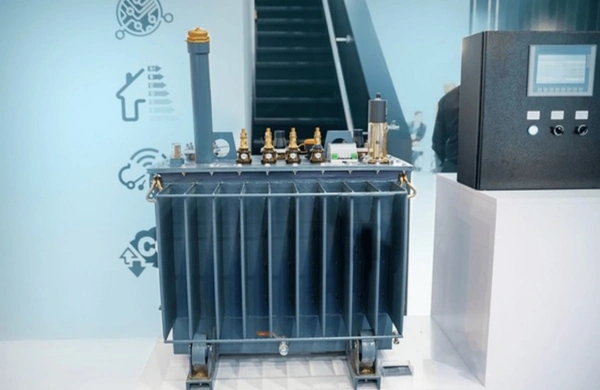Heavy-duty operations in North America’s industrial sector need strong and dependable power infrastructure. It is important for businesses in industries like steel mills, petrochemicals, mining, and large-scale manufacturing to work with experienced high voltage transformer manufacturers. This article talks about what people in charge of procurement, engineering, and operations should think about when choosing a partner. It also explains how Zetwerk can provide the heavy industry with the capability, quality, and value it needs.
Know About High Voltage Transformer Manufacturers for Heavy Industries
The Role of High-Voltage Power Transformers in Heavy Industry
Heavy industry typically requires high electrical loads, high reliability, and strict adherence to safety and regulatory requirements. A high-voltage power transformer is a necessary part of plant systems because it can raise or lower voltage levels to make transmission more efficient, distribution more stable, and use safer.
For example, in a steel mill, transformers can lower transmission voltages (like 110 kV or 230 kV) to a level that powers furnaces, motors, and other systems. They will also have to confront harsh conditions, such as thermal cycles, harmonic loads, and transient disturbances, and they will work without any problems for decades.
Heavy industry facilities may also need high-voltage distribution transformers, which lower voltages from higher levels (like 33 kV) to industrial service levels (like 4.16 kV). These units power the internal plant grid, which in turn powers production cells, drives, and other important infrastructure.
So, decision-makers must know the transformer’s voltage class and rating, manufacturing quality, testing ability, lifetime support, and supply chain strength.
Key Selection Criteria for Heavy-Industry Transformer Buyers
When evaluating potential transformer manufacturers, procurement and engineering leaders should assess the following criteria:
Manufacturing & Engineering Capability
- Does the manufacturer have the in-house ability for core construction, winding, tank fabrication, assembly, and final testing?
- Can the supplier adhere to relevant standards (ANSI/IEEE, IEC) and provide documented type-test reports and factory acceptance testing?
- Can the manufacturer provide custom design options (e.g., special cooling systems, harmonic filters, tap changers) tailored for heavy-industry environments?
Quality, Standards & Compliance
- Critical heavy-industry applications demand transformers that meet type-testing and full design reporting. The market for high-voltage power transformers is forecast to grow significantly, driven by infrastructure investment.
- Ensure compliance with industrial norms: insulation, temperature rise, noise levels, short-circuit withstand, and seismic or adverse environment conditions as needed.
- Verify the manufacturer’s quality systems (ISO certifications, documented inspection records) and ability to provide documentation for OEMs, EPCs, and utilities as required.
Supply-Chain, Lead Times & Logistics
- Heavy-industry transformers are major equipment items. Long lead times are common. Assess the manufacturer’s project-management capability, logistics planning, and North America service support.
- Risks such as global supply chain disruptions or domestic sourcing constraints drive home the importance of a reliable partner. For North American buyers, the ability to deliver on time and coordinate shipping across modes counts as much as technical compliance.
- Review information on previous heavy-industry installations—reviews, on-time performance, and follow-up service.
Cost, Total Life-Cycle Value & Service
- While initial purchase cost is important, heavy-industry operators should evaluate total life-cycle cost: efficiency (losses), maintenance, spares, downtime impact, and logistics for replacement.
- A manufacturer who can offer full life-cycle service support—from design through installation, commissioning, and long-term maintenance—becomes a strategic partner rather than simply a vendor.
- For example, the difference between regular manufacturing and heavy-duty manufacturing in the industrial sector usually comes down to how well the engineering can handle tough conditions, the ability to tolerate variations, and the capacity for working under heavy use.
Why Zetwerk is Your Partner for Heavy-Industry High-Voltage Transformers in North America
As a manufacturer committed to serving North American heavy-industry clients, Zetwerk brings these advantages:
- End-to-end manufacturing: From core fabrication, coil winding, tank build, assembly, and rigorous testing, every step is under Zetwerk’s direct control—ensuring accountability and repeatability of quality.
- Zetwerk follows strict standards in its manufacturing process, meeting ANSI/IEEE and IEC guidelines, and provides complete documentation and testing to ensure their products are suitable for heavy
- Zetwerk creates transformers specifically for large manufacturing plants, making sure they are very reliable, can handle tough work, have custom settings, and can operate with little downtime.
- North American supply mindset: Zetwerk understands the importance of reliable logistics, project timing, and supplier discipline expected by U.S.-based decision-makers in engineering and procurement functions.
- Strategic partner orientation: Zetwerk positions itself not only as a vendor but as a manufacturing partner—aligning engineering collaboration, documentation, delivery, and service into a unified offering for your heavy-industry transformer needs.
By choosing Zetwerk as your high-voltage transformer manufacturer, heavy-industry buyers in North America secure a partner who is engineered and equipped to match their operational demands, budget constraints, and reliability expectations.
Typical Applications & Use-Cases in Heavy Industry
Heavy-industry operations find high-voltage transformers used in scenarios such as:
- Steel and metal production: Step-down of high-transmission voltages to furnace circuits, large drives, and continuous casting lines.
- Petrochemical and chemical plants: Large motors, fractionation towers, and compressors requiring stable power and minimal downtime.
- Mining and minerals processing: Large drive systems, grinding mills, and crusher circuits with high harmonic loads and demanding ambient conditions.
- Large industrial campuses or manufacturing facilities: High-voltage distribution networks within the site boundary, requiring robust distribution-class high-voltage transformers to feed individual service buildings.
In all these cases, the selection of the right transformer manufacturer becomes critical—because any failure or extended downtime impacts production, profitability, and safety.
Next Steps for Heavy-Industry Decision -Makers
When sourcing high-voltage transformers for heavy-industry applications, adhere to the following checklist:
- Define your requirement: voltage class, capacity (MVA/kVA), duty cycle, ambient conditions, harmonic environment, and tap-changer requirements.
- Short-list manufacturers: Focus on those with heavy-industry experience, North American supply readiness, and strong quality documentation.
- Request proposals: Ask for type-test data, manufacturing lead time, shipping plan, installation-support scope, and documentation package.
- Evaluate total cost: Include purchase price plus losses, maintenance, downtime risk, and service support.
- Engage early with your manufacturer for alignments on fits, foundations, rigging, logistics, and commissioning timelines.
- Finalize partner: Select the manufacturer who aligns most closely with your operational objectives, engineering team, procurement schedule, and life-cycle plan.
Contact Zetwerk
If your company is specifying or sourcing a high-voltage transformer for a heavy-industry application—whether it be a steel mill, petrochemical plant, mining operation, or large manufacturing facility—partner with Zetwerk. Contact our engineering team today to discuss your requirements, explore custom design options, and ensure delivery-ready Zetwerk transformers manufacturing with full documentation and support.




FAQs
A. A high-voltage power transformer is typically used in transmission or grid-substation applications to step voltages up or down at high levels (e.g., 110 kV, 230 kV, or above) and handles large MVA ratings. A high-voltage distribution transformer steps voltage from higher levels (e.g., 33 kV, 13.8 kV) down to industrial service levels (e.g., 4.16 kV) within a facility or site network.
A. Lead times vary depending on rating complexity, testing requirements, and the manufacturer’s backlog. For heavy-industry custom units, 18–30 weeks or more is common. You should include logistics, site readiness, and commissioning into the schedule
A. Heavy-industry operations involve high loads, adverse conditions, and minimal tolerance for downtime. A manufacturer experienced in heavy-industry applications will design for specialized duty cycles, heavy harmonic loads, and environmental stress and provide robust documentation and service support.
A. Consider parameters such as transformer efficiency (losses under load), maintenance intervals, spare-parts availability, expected downtime cost, installation and commissioning expense, and end-of-life options. A manufacturer who partners on all these fronts offers better long-term value.







